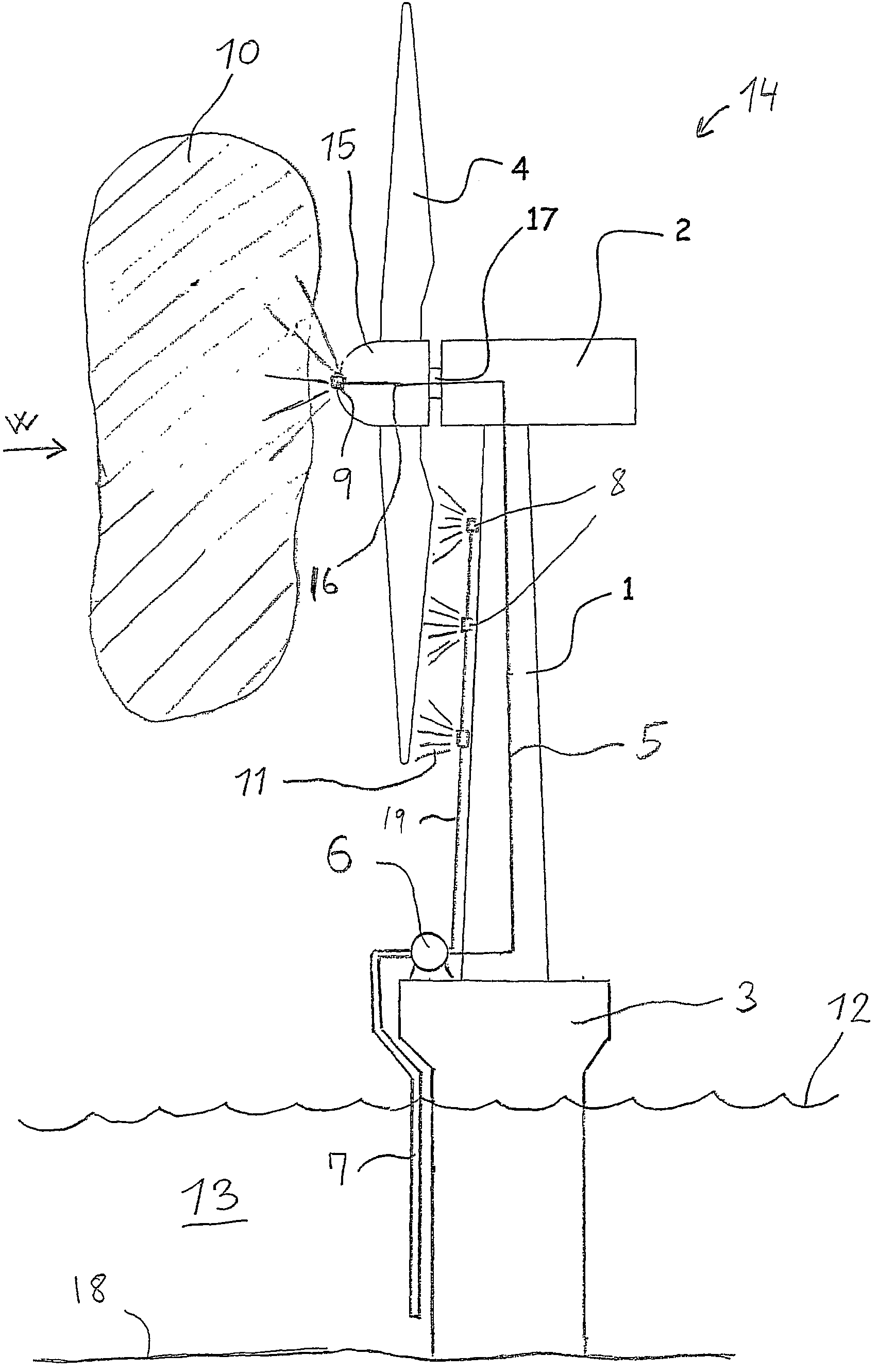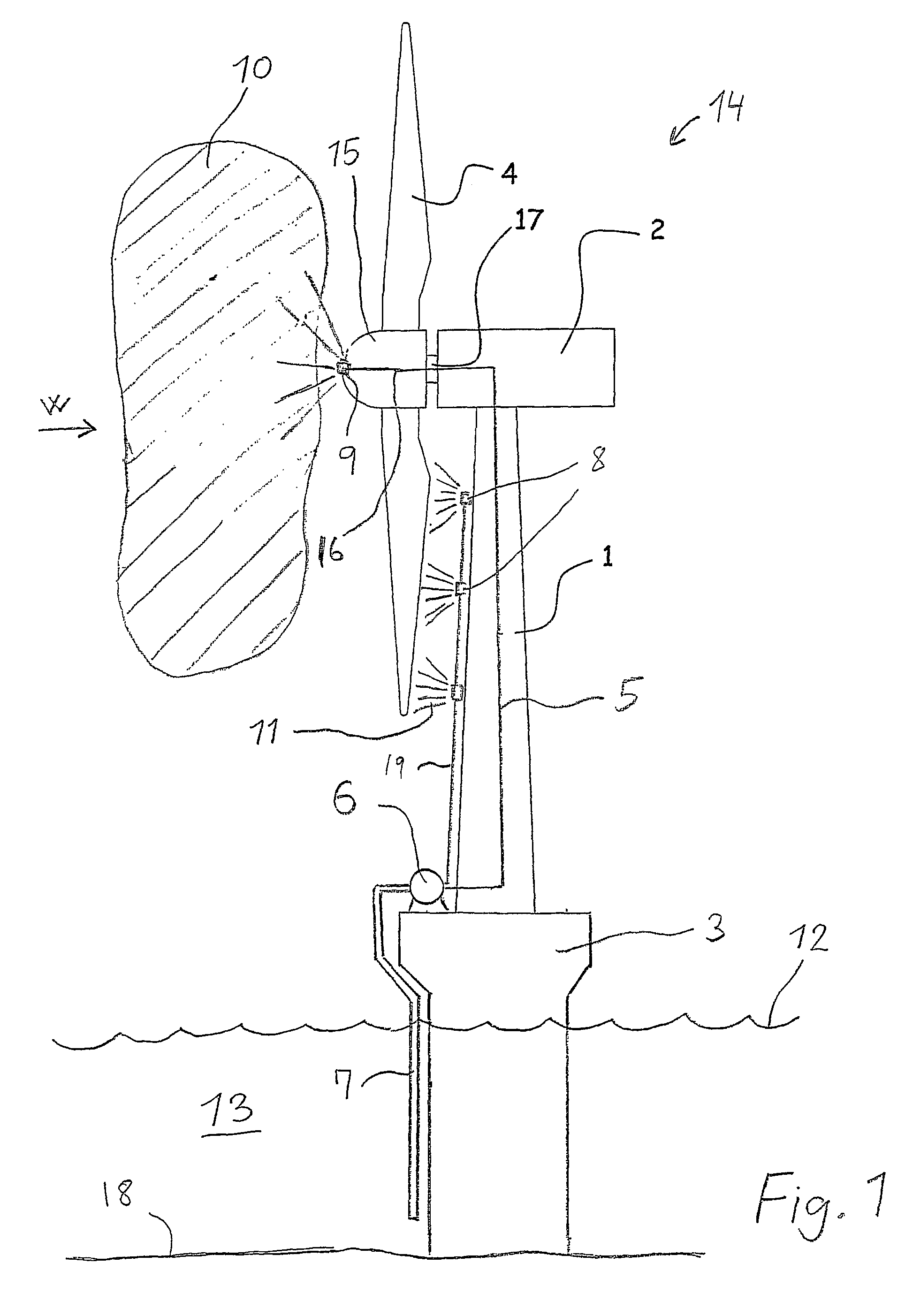Offshore wind turbine with device for ice prevention
a wind turbine and ice prevention technology, applied in the direction of machines/engines, mechanical equipment, liquid fuel engines, etc., can solve the problems of affecting the operation, affecting the efficiency of wind turbines, so as to increase the salt concentration and increase the concentration
- Summary
- Abstract
- Description
- Claims
- Application Information
AI Technical Summary
Benefits of technology
Problems solved by technology
Method used
Image
Examples
Embodiment Construction
[0031]The offshore wind turbine diagrammatically shown in FIG. 1 includes a base 3 standing at the bottom 18 of the sea 13. The base 3 which forms a part of the tower 1 of the wind turbine rises above sea level 12. The tower 1 of the wind turbine extends further up from the base and supports a nacelle 2, also called a cap of the wind turbine. A substantially horizontal main shaft 17 extends from the nacelle 2, a rotor including a hub 15 and a plurality of blades 4 being mounted on said main shaft. The nacelle 2 can yaw, which means it can pivot around a vertical shaft in relation to the tower 1, hereby being able to adjust the rotor in relation to the direction of the wind. The wind turbine shown is a so-called upwind rotor, where the wind hits the rotor before the tower 1. A pump 6 is placed on the base 3. At the suction side said pump communicates with a suction hose 7 extending down below sea level 12, thus being able to pump up sea water. At the delivery side the pump 6 communic...
PUM
 Login to View More
Login to View More Abstract
Description
Claims
Application Information
 Login to View More
Login to View More - R&D
- Intellectual Property
- Life Sciences
- Materials
- Tech Scout
- Unparalleled Data Quality
- Higher Quality Content
- 60% Fewer Hallucinations
Browse by: Latest US Patents, China's latest patents, Technical Efficacy Thesaurus, Application Domain, Technology Topic, Popular Technical Reports.
© 2025 PatSnap. All rights reserved.Legal|Privacy policy|Modern Slavery Act Transparency Statement|Sitemap|About US| Contact US: help@patsnap.com


